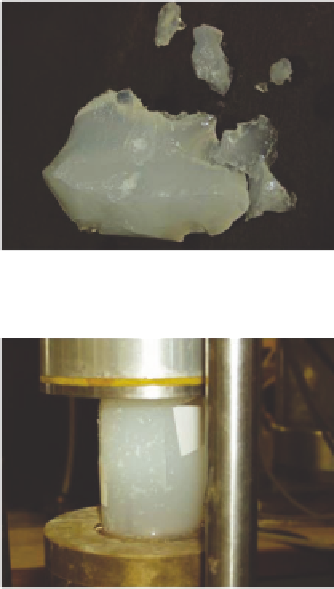Geoscience Reference
In-Depth Information
Fig. 15.34. Appearance of solidified colloidal silica
Fig. 15.35. Unconfined compression teston solidified colloidal silicamaterial
material was cured for 30 days in water so that drying might be avoided. Figure15.36
illustrates the shape of the sample after failure. Due probably to some heterogeneity, the
central part remained after largedeformation.
The test results are presented in Figures15.37 and 15.38. The special interest lay in the
measurement of lateral strain. Hence, two sets of laser displacement transducers were
placed at 1/3 and 2/3 of the sample height in order to monitor the lateral displacement at
the sample surface. As seen in Figure15.35, sheets of white paper were attached to the
surface so that reflection of laser beam was facilitated. The test results in Figure15.38
indicates that the ratio of axial and lateral strains, which is namely the Poisson ratio
υ
,
is around 0.3. Thus, the material has a volume compressibility; if
5, volume does
notchangeduringshear.Itisthereforepossiblethattheliquefactionresistanceofsandis
improvedbyvolumecompressibilityofsolidifiedsilica.Itshouldberecalledthatconstant
volume of pore water is the important cause of high excess pore water pressure during
undrained shear.
υ
=
0
.

